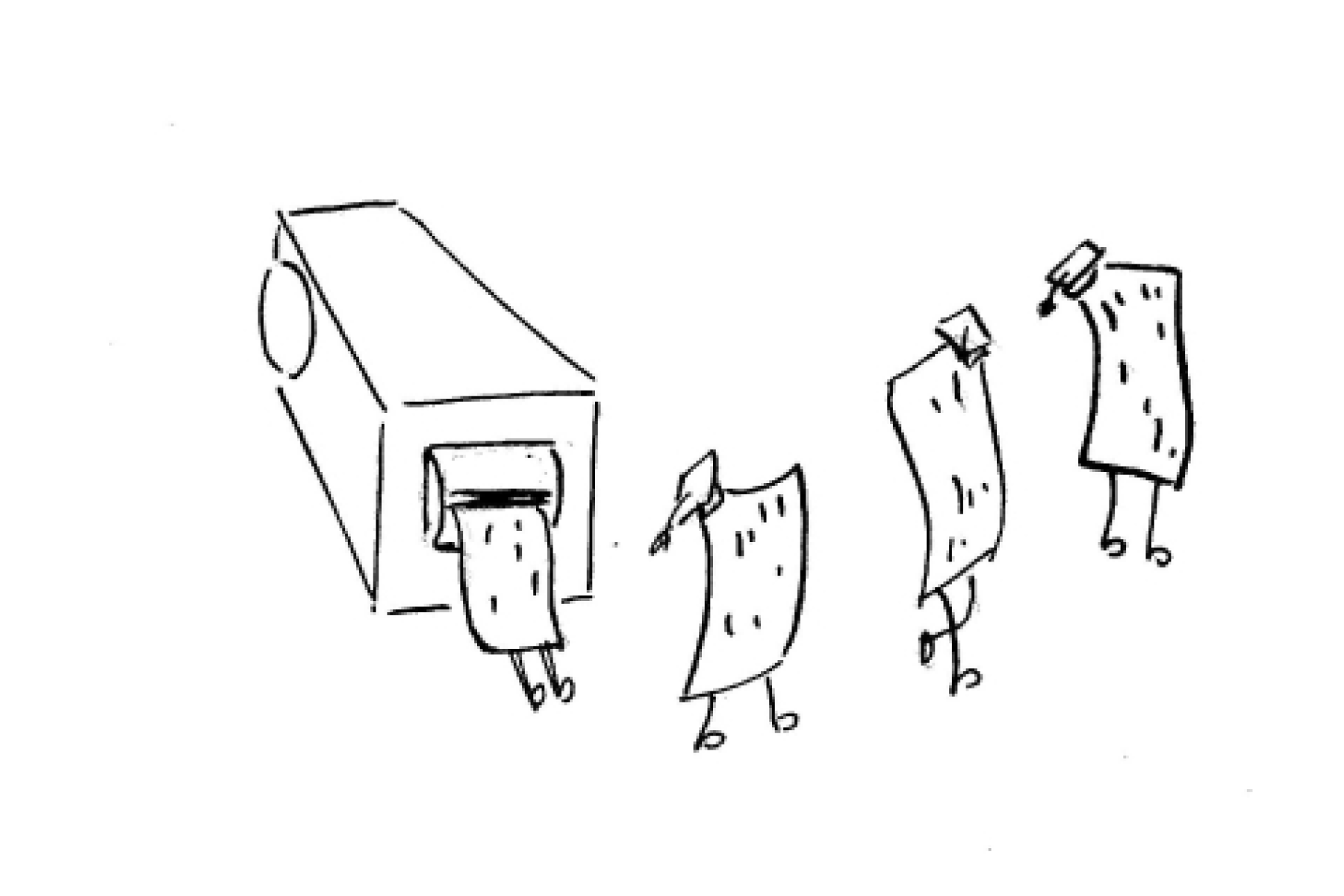
The Context
Flintstone is crane operator at a construction company who moves rocks for a living. And every afternoon at quitting time, when he hears the coveted sound of the alarm, he slides down the dinosaur’s tail, punches the time clock and heads home. Standard operating procedure for the rock quarry.
The Tool
Punching Out
PUNCHING OUT — A ritual of leave taking at the end of your creative workday
Most creative professionals don’t have the luxury if sliding down a trusty bronto's talk. We’re artists who work in nontraditional or home based environments that don’t contain natural boundaries. And so, it’s important that we create rituals of leave taking. Microstructures that celebrate the completion of a period of work, slow down the creative process and set healthy boundaries to demarcate the line between work and nonwork. Pressfield, the patron saint of blue collar creativity, writes that the difference between an amateur and a professional is in their habits. Back in the analog days when the economy relied on blue collar muscle to build the modern world, he writes in his essay, steelworkers gave everything they had to get that work done. In three shifts, twenty four hours a day, three hundred and sixty five days a year, hard hatted men with lunch pails swinging from their gnarled hands passed through mill gates. Isn’t there an earnest and empowering nostalgia about that ethos? It’s the kind of mindset every creative person can hold while they do their daily work.

Scott's Take
When I first started my publishing company, I moved back in with my parents. It seemed like a brilliant way to save money as my enterprise got off the ground, plus a surefire repellent against any attractive female who would potentially sleep with me. Whatever, we all suffer for our art. However, the one skill that I honed during that three year period was my discipline. My standing order each morning was to be out the door by seven. Off to the neighborhood coffee shop for journaling, reading, writing, chattering with some local folks, and of course, pumpkin scones. This ritual did wonders for my creative habit. It made me feel like a professional. Treating the coffee shop as a reverse curfew emboldened me with a sense of maturity to offset the fact that I was still sleeping the same bedroom I used when I was nine. By the time I was ready to move into my own place, the seed of discipline had blossomed into a full blown flower of dedication. And it still nourishes me today. How do you wield the little control your have around you creative habit?
The Rest
Punching out is a way to remind you that being a professional artist is a real job just like anything else, and deserves to be treated as such. You have to know where you end and the work begins. How do you professionalize your creative practice?
The Benefits
Celebrate the completion of a period of work
Professionalize your creative practice as legitimate, meaningful work
Set healthy boundaries to demarcate the line between personal and professional
Placing punctuation marks throughout your day to gain a sense of normalcy and rhythm